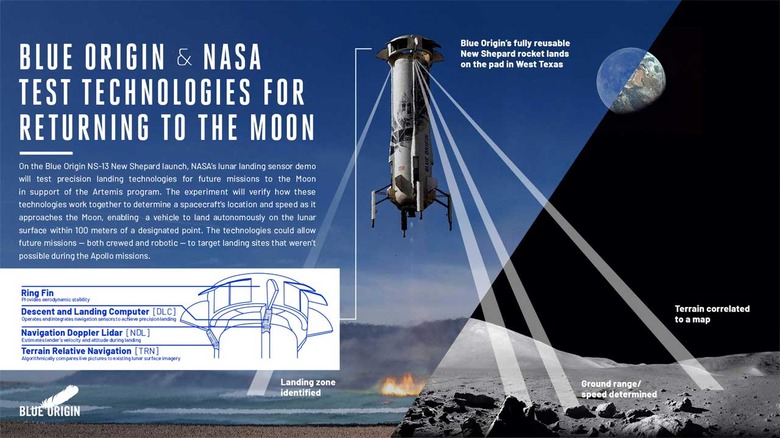Blue Origin New Shepard Completes Mission With Precision NASA Tech On Board
Blue Origin has announced that it has completed a successful New Shepard mission to space and back, making this the spacecraft's 13th mission. While the latest mission was the 13th overall, this is the seventh consecutive flight for the specific vehicle, which is a record. This flight was particularly important as there were 12 payloads onboard, including NASA Precision Lunar Landing technology.
The NASA technology aboard the spacecraft included the Deorbit, Decent, and Landing Sensor Demonstration technology, part of the NASA Tipping Point partnership. NASA's landing sensor demo marks the first time a payload has been mounted to a New Shepard booster's exterior. The landing sensor demo tested during the mission is designed to achieve high accuracy landing.
NASA's tech is designed to enable long-term lunar exploration and future Mars missions. The crew capsule reached an apogee of 346,964 feet above ground level, 350,611 feet mean sea level. The booster itself reached an apogee of 346,563 feet AGL. The total mission time was 10 minutes and nine seconds, with a maximum ascent velocity of 2232 mph.

Aboard the spacecraft during the mission where tens of thousands of postcards from the Blue coverage and nonprofit called "Club for the Future." Some of those postcards had a NASA Artemis stamp on them.
Blue Origin notes mission crew that supported the launch did exercise social distancing and safety measures due to COVID-19. New Shepard lifted off October 13 after being delayed on September 25 when a technical issue required the launch to be scrubbed. The mission had previously been scrubbed on September 24 when Blue Origin detected a potential problem with the power supply for the experiments.
